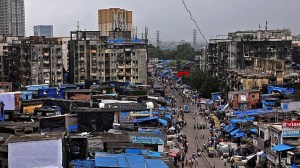The Three Corners that Unite Us
The humble samosa is found everywhere,and savoured by all.
The humble samosa is found everywhere,and savoured by all
This was a perfect monsoon week. Cool breezes and grey skies made it harder than ever for us to drag ourselves to the hopeless,pre-apocalyptic drudgery that passes for gainful employment in the 21st century. As we slouched towards work,kicking puddles in dejection,most of us would have had one thought,and one thought alone: this is the perfect day to stay at home,piling into chai and samosas. We all had that thought and probably imagining similar samosas,too,for it is extraordinary how standardised they have become. Pretty much everywhere in this country other than the four southern states an aloo filling,perhaps enlivened by peas,and a maida crust about an eighth of an inch thick,just enough to be flaky,not enough to be crisp all the way through. But,taste being what it is,we still manage to develop strong preferences. Some of us eat only the crust,marvelling how differences in the stuffing nevertheless manage to change the flavour of the pastry covering. Others despise cocktail samosas,a ridiculous affectation,like Chihuahuas. And there is the perennial question of red vs green: mint or tamarind chutney?
I,for example,like my filling ever-so-slightly sweetened,and my crust soft and under-fried. Yes,the first marks me as a man who calls his samosas singharas. And the second is even more personal,for that was how old Perry,slaving over his giant kadhai,used to make them in his little annexe to the canteen at Loyola,Jamshedpur. When you have hundreds of hungry schoolkids to feed in that shortest instant of recordable time,the morning recess,you don’t over-fry your samosas.
But I am here to tell you: there is no such thing as an authentic samosa. Nobody knows for certain when the current recipe spread through the country; but in the South,you can still find aloo-free samosas,in Pakistan,they stuff them with heavily spiced meat,and in the bylanes of Lajpat Nagar,they are doing quite extraordinarily inventive things with babycorn,carrots,and even Maggi noodles. (Stuffed into what is being cannily marketed as the “Chinese samosa”,its crust decorated with suitably Oriental curlicues.) In Bombay,Guru Kripa in Sion (W) sells chhole-samosas to a hungry crowd from daybreak onwards; in Calcutta,the tiny mutton samosas from Nahoum’s in New Market explode on your tongue,and even look suitably dainty on your heirloom china. And it is surely the most universal of Indian snacks. Many otherwise rational people disdain street chowmein as tasteless,starchy junk; papri-chat is too sour for some,jalebis too sweet for others. But everyone likes a samosa. They unite us. They will be served after JNU seminars where the neo-liberal leanings of the Indian state are derided,and after the hard men of the Sangh have finished their strenuous weekly workout. They are served at government at-homes,and at BJP leaders’ durbars. Nothing surely is more Indian.
Which makes it particularly satisfying to note that the samosa is Central Asian in origin,brought into the subcontinent in the 12th or 13th century by the various migrations and invasions that those samosa-chomping Sanghis view as destroying a pristine national culture and,presumably,cuisine. In Tajikistan,they devour three-cornered fried pastries with abandon,and call them samboosas. In Turkestan,they do something very similar to lamb-stuffed baked samosas. In Kabul,at this moment,mutton-and-onions sambosas are being fried up for an eager crowd of men. They gave it to us and we,in turn,passed it on: across the Arab world sambusaks are being prepared for those about to break their fasts; in Israel,they’re already eating theirs,stuffed with chickpeas; in Burma,they’re smaller,and flatter,and sometimes they put them in a Bengali-style chholar dal. Even in cafes in faraway Lisbon,chamuças,heavy in pork and vinegar,compete with empadas on the menu.
Indeed,in Somalia,samosas are being viewed as dangerous,cosmopolitan and un-Islamic. Samosas or sambusas,as they’re called there and in Ethiopia are popular during Ramzan; but the militant Islamist group,al-Shabaab,recently banned them. Perhaps because there’s a famine on. And perhaps because,as residents of Mogadishu hastened to point out,it reflected dangerous foreign influence nothing specifically Indian,though,just that the samosa’s three corners was suggestive of Christianity’s Trinity. The ridiculousness of the religious when it comes to seeing messages in food should never be underestimated.
On the slushy streets of our cities,a hundred million samosas will sizzle in a million kadhais tomorrow. Half a billion people will trudge to work tomorrow past those kadhais,dreaming of a cup of strong tea and a garma-garam samosa as the clouds gather. One of those will be you. But today is Sunday. What’s stopping you?
mihir.sharmaexpressindia.com


- 01
- 02
- 03
- 04
- 05




























